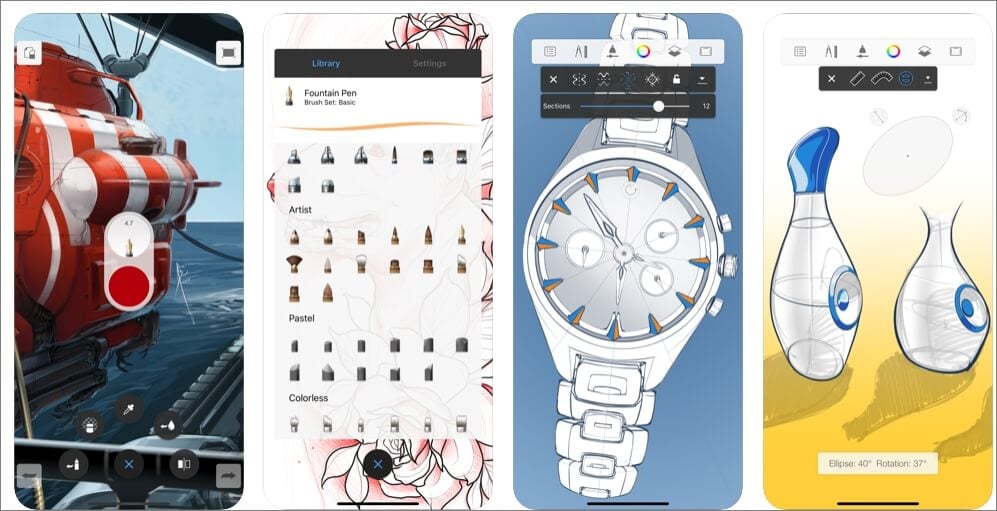
It’s all been simplified to make it work within the confines of the screen. If you’re familiar with Sketchbook Pro, you’ll recognize the Marking Menus, tools and a similar process. A main set of brushes and access to settings, layers and color. But, with the brush tools provided you get the sensation that you are using a device to create the most amazing idea that ever popped in your head. If you do, it’s a lot like wiping smears off your screen, with color appearing beneath.

You sketch with your finger, erase with your finger, tap-tap and zoom with your finger. It takes the idea of conceptual sketch design using a large screen and a Wacom tablet and shoves it down into the tiny, yet addictively convenient interface of the iPhone touchscreen.

This isn’t the first Sketch-type app to hit the iPhone, but it is the first attempt a major product development company has made toward porting one of their design products to the popular mobile device. PSD format with layers intact!! Good stuff. It has a few more layer features, brush resize preview and export to. NOTE: This is a manual process, you can only import 1 sketch at at time.Update! Since this review, you may be interested to know that AutoDesk has released version 1.1 of their popular iPhone Sketching App. See: How to import emailed TIFF images into SketchBook for Android To re-import the file, you need to do this: You can use the desktop version of SketchBook to complete our work ( 3.Uninstall SketchBook and reinstall SketchBook from Google Play.Ĥ.

On Android, it's pretty easy, just copy the files from /Autodesk/SketchBook3 and copy it to your desktop computer.

NOTE: Your sketches are in the /Autodesk/SketchBook3 folder. Test SketchBook.Ģ.Backup your Sketches AND delete the /Autodesk folder. This can be done via: Settings > Apps > Autodesk SketchBook > Storage > Clear Data & Clear Cache. We have had some reports of SketchBook crashing when accessing the Gallery on Android.ġ.Try to reset SketchBook to default.


 0 kommentar(er)
0 kommentar(er)
